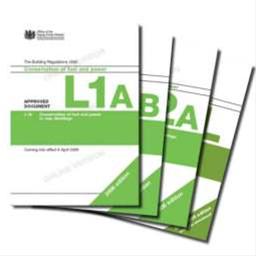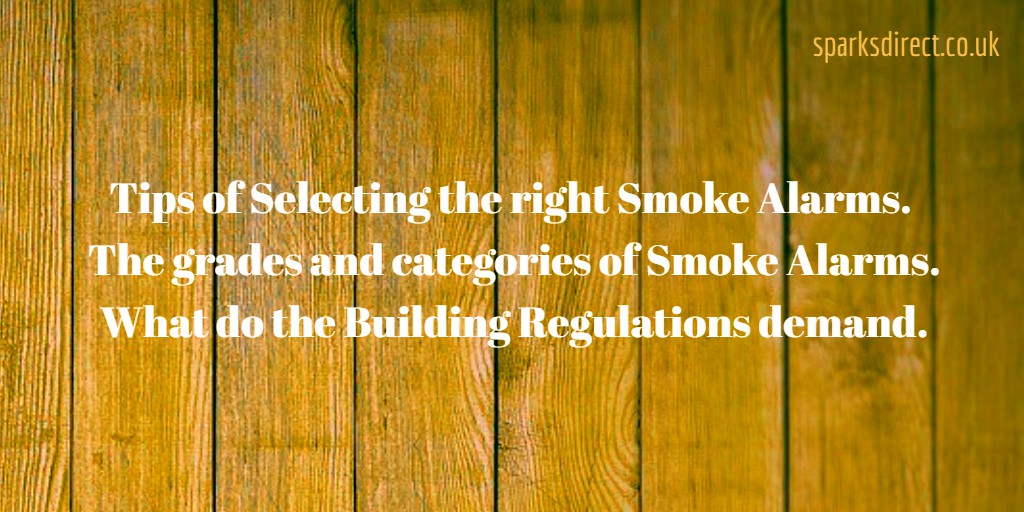Grades and Categories of Fire Detection Systems
Six different grades of fire detection systems are defined in the British Standard BS 5839: Part 6: 2004 and generally speaking the greater the fire risk the more sophisticated the system should be. Briefly, the Grades are as follows:- Grade A: A full system with control and indicating equipment installed to BS 5839: Part 1;
- Grade B: Detectors and sounders using simpler specified equipment;
- Grade C: Detectors and sounders or alarms with central control;
- Grade D: Mains powered alarms with an integral stand-by power supply;
- Grade E: Mains powered alarms with no stand-by power supply;
- Grade F: Battery powered alarms;
- LD1: Alarms in all circulation spaces that form part of escape routes and all areas where a fire might start, but not bathrooms, shower rooms or toilets.
- LD2: Alarms in all circulation spaces that form part of escape routes and rooms or areas that present a high fire risk.
- LD3: Alarms in circulation spaces that form part of escape routes.
Examples of various Domestic properties
Existing Tenanted Properties
Two and three storey - Grade D, LD3- Mains alarms with battery back-up;
- Optical alarms in circulation spaces – hallways and landings;
- If a fire risk assessment shows the property or occupier to be a high fire risk, increase the number of alarms installed to meet the risk - e.g. follow recommendations for an LD2 installation;
- All alarms must be interconnected;
- The sound pressure level of the alarm signal measured at the doorway of each bedroom with the door open should be at least 85dB (A). This is the definitive guidance to which Architects, Building Professionals, Enforcing Authorities, Landlords and Installers should refer for recommendations on the design, installation and use of smoke and heat alarms in the majority of domestic dwellings. Landlords in both the public and private sector are considered to have a Duty of Care to fit compliant smoke and heat alarm systems.
Existing Tenanted Properties
Single storey - Grade F, LD3- Battery powered with a minimum battery life of 5 years;
- Optical smoke alarm in circulation spaces – hallway;
- If a fire risk assessment identifies a concern that the occupier cannot or may not replace a battery, use mains alarms or mains with battery back-up
- If a fire risk assessment shows the property or occupier to be a high fire risk, increase the number of alarms installed to meet the risk - e.g. follow recommendations for an LD2 installation.
What do Building Regulations Demand?
 Architects, builders and installers must comply with Building Regulations and install mains powered alarms in new and materially altered dwellings.
Architects, builders and installers must comply with Building Regulations and install mains powered alarms in new and materially altered dwellings.
Grade D, LD3
- Mains alarms with battery back-up with the mains supply taken from a lighting circuit or a dedicated circuit from the distribution board
- Smoke alarms are required in the circulation spaces such as hallways and landings. In general optical alarms are recommended Heat alarm to be installed in the kitchen where there is no door separating the kitchen from the circulation space;
- Smoke and heat alarms must be interconnected;
- Alarms may be interconnected using radio-links.
Northern Ireland
Building Regulations (Northern Ireland) Technical Booklet E (Fire Safety) requirements were amended in June 2005 to:Grade D, LD2
- Mains alarms with a battery back-up;
- Smoke alarms are required in the circulation spaces, hallways and landings;
- A smoke alarm is required in the ‘principal habitable room’ e.g. living room;
- A heat alarm is required in every kitchen;
- Loft conversions require all the above to be installed;
- Smoke and heat alarms must be interconnected;
- Alarms may be interconnected using radio-links.
Scotland
Building Standards Technical Handbook No 2 (Fire) requirements are currently:Grade D, LD3
- Mains smoke alarms with battery back-up;
- Smoke alarms are required in the circulation spaces, hallways and landings;
- Smoke and heat alarms must be interconnected;
- Alarms may be interconnected using radio-links.
England & Wales
Building Regulations Approved Document B (Fire Safety) minimum requirements are currently Grade D, LD3, but it also defines that installation should be to BS 5839 Pt.6 and therefore Grade D, LD2 is recommended.This article is similar to & continuing the thought of the Standards and Regulations for the Smoke and Heat Alarms and the Standards and Rules for the Fire Alarms, dealing with the Domestic Fire alarms from Aico(and not only).




